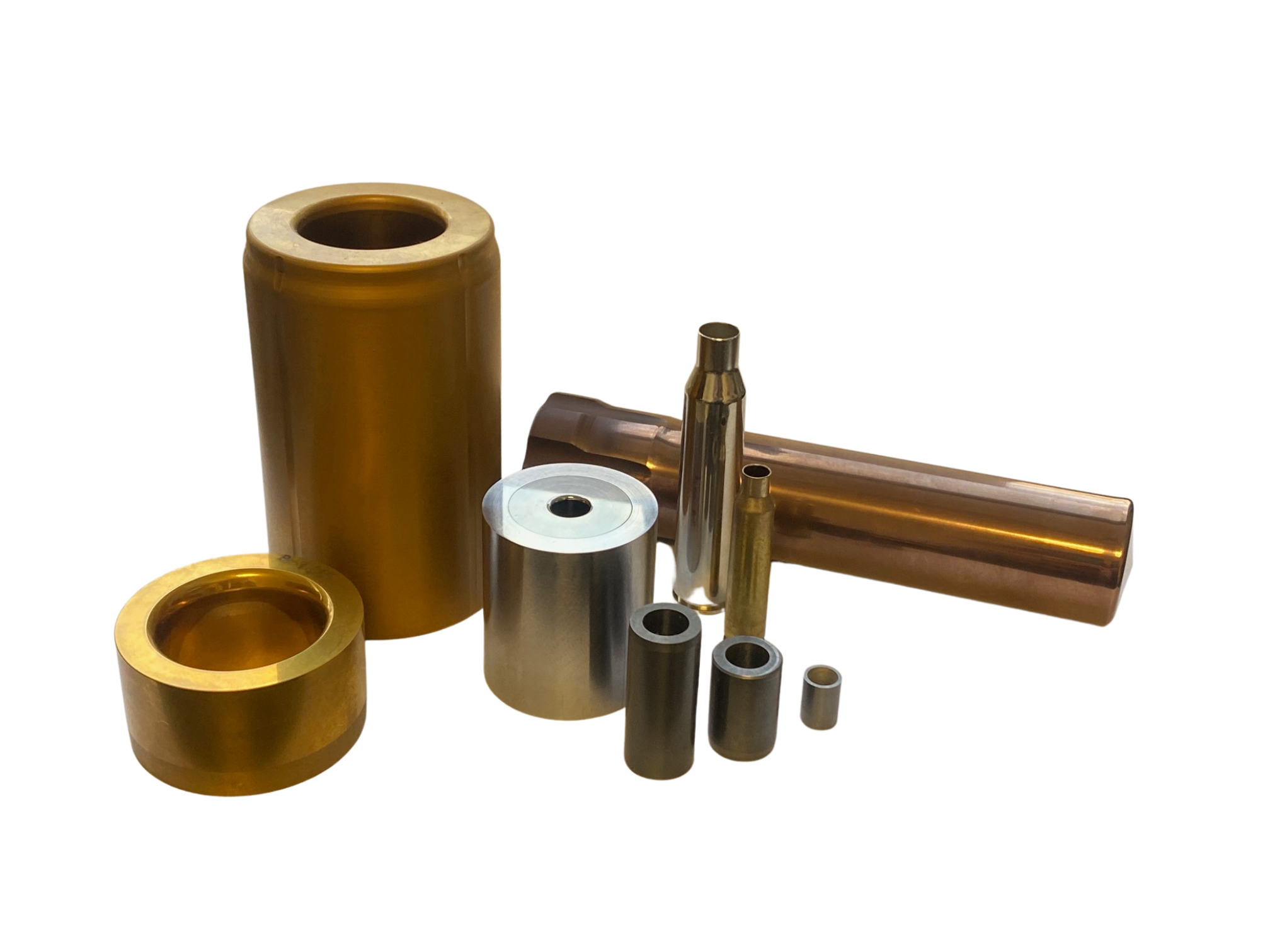In modern manufacturing, tool performance can make or break a production line. Whether you’re running a high-volume CNC shop or a small batch operation, the cutting tools you choose play a direct role in productivity, quality, and cost efficiency.
As demand for tighter tolerances and faster turnaround times grows, manufacturers are rethinking their approach to tooling.
Among the many options available today, carbide tooling, such as carbide cutting tools, are trusted in the industry for their consistency and durability. Built to handle intense heat and high-speed operations, these tools are increasingly becoming the go-to choice across industries.
From aerospace to automotive, businesses are investing in solid carbide tools not only for their strength but also for their ability to maintain precision over long production runs.
This guide breaks down the practical reasons why choosing carbide cutting tools can be beneficial for your company.
Key Highlights
- Carbide cutting tools offer longer tool life, reducing downtime and the need for frequent replacements in high-speed production environments.
- Solid carbide tools maintain sharpness and dimensional accuracy even when cutting hard materials like titanium or stainless steel.
- These tools handle high temperatures well, allowing faster feed rates and improved surface finishes without degrading tool performance.
- Investing in solid carbide tools results in a lower cost per finished part over time, despite their higher initial price.
Raven Carbide provides expert guidance and high-quality carbide cutting tools tailored to your specific machining needs.
What Are Carbide Cutting Tools?
Carbide cutting tools are precision tools made from a combination of carbide particles and a metal binder, typically cobalt. This compound is then formed into extremely hard cutting tips or tool bodies.
What makes carbide special is its hardness. It ranks much higher on the Mohs scale compared to materials like high-speed steel (HSS), which means it can cut tougher materials more efficiently and with less wear.
These tools are commonly used in applications where regular cutting tools would dull quickly. For example, industries like aerospace, defense, automotive, mold and die making, and medical device manufacturing rely heavily on carbide cutting tools to maintain performance standards.
It’s also worth noting that not all carbide tools are the same. There are brazed carbide tools, where a piece of carbide is fused to a steel body, and there are solid carbide tools, which are made entirely of carbide. The latter is typically more durable and offers better stability in high-speed machining.
Compared to traditional steel tools, carbide options last longer, retain their edge better, and support tighter tolerances. That’s why so many shops are choosing to invest in carbide cutting tools: they offer consistency and reliability that directly impacts output quality and efficiency.
What Makes Solid Carbide Tools So Reliable?
Solid carbide tools have become a trusted option for manufacturers aiming for precision, durability, and long-term value. Their full-carbide composition allows them to outperform conventional cutting tools across several key areas.
Below is a breakdown of the most important performance features:
1. Edge Retention and Wear Resistance
Tungsten carbide is much harder than high-speed steel, which allows solid carbide tools to stay sharper for longer periods. This means fewer tool changes, better dimensional accuracy, and more consistent results over time.
Some carbide cutting tools can also offer up to ten times the lifespan of traditional tooling, depending on the application. Longer tool life helps reduce production downtime and minimizes the cost of tool inventory.
2. Stability at High Temperatures
Machining at high speeds often leads to elevated temperatures at the cutting edge. Unlike steel tools that can lose hardness when exposed to heat, solid carbide tools remain thermally stable. This allows them to perform well during dry machining and high-speed applications.
3. Superior Rigidity for Precise Cutting
One of the standout features of solid carbide tools is their stiffness. The rigid structure minimizes deflection during cutting, which is essential for maintaining close tolerances. Less tool movement also improves surface finish and reduces vibration that can lead to chatter or premature tool failure.
For industries that require tight specifications, such as aerospace or mold making, this level of precision is especially important.
4. Optimized Geometry for Chip Control
Solid carbide tools can be designed with specialized flute shapes and cutting angles that help improve chip evacuation. Better chip control reduces the chances of built-up edge or clogging, both of which can damage parts and shorten tool life.
With cleaner cuts and less debris buildup, manufacturers can maintain smoother operations and extend tool performance.
5. Versatility Across Materials
While solid carbide tools are often associated with difficult-to-machine materials like titanium or hardened steel, they also perform well on aluminum, stainless steel, and various alloys. Their adaptability makes them a practical choice for shops working with mixed materials or those needing to reduce tool changes across different jobs.
Key Benefits of Using Carbide Cutting Tools
Investing in carbide cutting tools is not only about improving cutting performance. It also has practical advantages that directly affect your bottom line. Whether you’re managing a high-volume production facility or a small-scale shop, these tools offer measurable improvements in efficiency, precision, and cost savings.
Here are the benefits you can expect from using carbide cutting tools in your operations:
1. Longer Tool Life Reduces Downtime
One of the most noticeable advantages of carbide cutting tools is their extended lifespan. Because they maintain their edge for a longer period, they require fewer replacements during a production run. This translates to less frequent tool changes and fewer disruptions to your workflow.
RELATED: Carbide Cutting Tools Maintenance: Best Practices for Peak Performance
2. Better Surface Finish and Dimensional Accuracy
Precision matters in any machining task. Carbide cutting tools deliver cleaner cuts with minimal burring or tearing, which leads to superior surface finishes. This reduces the need for secondary operations like polishing or deburring, saving time and labor.
The consistent sharpness of these tools also helps maintain tighter tolerances, which is especially important in applications like aerospace, medical, and mold making.
3. Higher Speeds and Feed Rates Improve Productivity
Because carbide cutting tools can withstand more heat and stress than traditional tools, they allow for faster cutting speeds and feed rates. This means you can process more parts in less time without compromising on quality.
4. Consistent Performance in Tough Materials
Machining harder metals like stainless steel, titanium, or heat-treated alloys often leads to rapid tool wear. Solid carbide tools are built to handle these materials with reduced risk of breakage or chipping. Their strength and rigidity provide more reliable cutting action, even under demanding conditions.
5. Lower Overall Cost Per Part
Although the upfront cost of carbide cutting tools is higher than that of standard tools, the long-term value is much greater. Longer tool life, faster cycle times, and fewer errors all contribute to a lower cost per finished part.
When measured across full production cycles, these savings often outweigh the initial investment. Manufacturers that track tooling performance over time typically find that carbide tools help optimize resource use and production budgets.
When Should You Use Solid Carbide Tools?
While solid carbide tools offer many advantages, they’re not always the right choice for every job. Understanding when to use them can help you get the most value out of your investment. These tools perform best in applications that demand precision, speed, and durability, especially when working with hard or abrasive materials.
- High-Speed or High-Volume Production. If your shop frequently handles long production runs or uses high-speed machining, solid carbide tools are a strong fit. Their heat resistance and wear performance make them ideal for operations where tool changes cause costly downtime.
- Machining Hard or Abrasive Materials. Solid carbide tools are particularly effective for cutting difficult materials such as titanium, stainless steel, cast iron, and hardened steel. These materials tend to wear down standard tools quickly. The hardness of solid carbide helps the tool stay sharp and effective, even during prolonged exposure to challenging workpieces.
- Tight Tolerance Applications. For parts that require a high degree of precision, solid carbide tools offer the consistency needed to hold tolerances within narrow margins. This makes them well suited for industries like aerospace, defense, and medical manufacturing, where accuracy goes a long way.
- Shops Aiming to Improve Surface Finish. When aesthetics or surface integrity matters, solid carbide tools often outperform other options. They leave smoother finishes that reduce or eliminate the need for secondary finishing steps.
- Operations Seeking Long-Term Tooling Value. For operations focused on reducing overall tooling costs rather than upfront pricing, solid carbide tools provide a good return. Their longevity, coupled with improved productivity, means they can be more cost-effective over time.
Cost Considerations: Is Carbide Tooling Worth the Investment?
For many manufacturers, the decision to switch to carbide cutting tools often comes down to cost. At first glance, solid carbide tools may appear more expensive than traditional alternatives. However, when you consider factors like tool longevity, reduced downtime, and improved part quality, the long-term value becomes more apparent.
Although the initial purchase price is higher, that cost reflects the tool’s overall performance. Solid carbide is built to last. Instead of needing multiple replacements during a single production shift, shops can often complete longer runs without interruption. This reduces tool changeovers, limits downtime, and results in more consistent output.
Another benefit is a lower cost per finished part. With faster cutting speeds, better dimensional control, and fewer errors, carbide cutting tools help manufacturers improve productivity.
In many cases, secondary finishing steps like polishing or deburring become unnecessary, which saves labor and machine time. When shops track these savings across large production runs, the cost advantages of carbide tooling often outweigh the upfront expense.
Reduced scrap and rework is another financial gain. As tools wear down, the risk of producing out-of-spec parts increases. For expensive materials or time-sensitive jobs, this can become costly.
Because solid carbide tools maintain their edge longer, they reduce the likelihood of tool-related errors, helping more parts pass inspection on the first run.
Overall, while solid carbide tools may cost more initially, their contribution to process stability, quality, and efficiency makes them a sound investment for many machining environments.
Boost Efficiency and Accuracy with Carbide Tooling
Solid carbide tools are particularly well suited for industries that demand accuracy, reliability, and efficiency. Whether you’re machining titanium, hardened steel, or aluminum, these tools offer consistent results with less downtime and fewer quality issues. They may come at a higher upfront price, but the long-term savings in labor, rework, and tooling management make them worth the investment.
At Raven Carbide Die, we help manufacturers select the best carbide cutting tools for their specific needs. Our services are designed to support productivity while maintaining high standards of quality and performance.
If you’re considering a switch to solid carbide tools or want to improve your current machining setup, we invite you to explore our product range and speak with one of our experts.Learn more about how Raven Carbide Die can support your tooling needs today. Contact us to know more.



